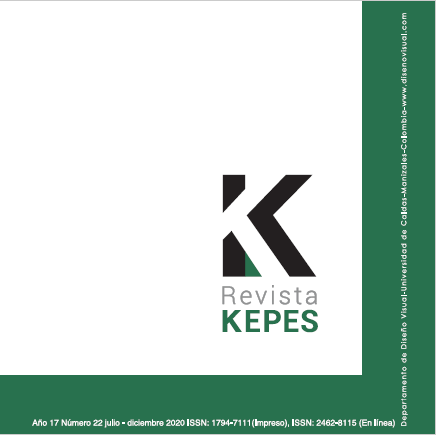Authors
Abstract
Are the arts transferable to each other? Could the same object roam through different fields such as painting, architecture and sculpture? The artist-architect Le Corbusier shows that these areas of art intermingle and merge into the Chapel of Ronchamp (1950), perhaps his most personal work. How, through the alternate exercises of painting and sculpture, the French-Swiss master managed to synthesize his architecture in a kind of formal experimentation laboratory, will be presented in this text. To do so, the artist would be based on the observation of nature, on experiences learned in his travels —especially in his formative journey through the East (1911)— or on techniques he would share with other artists, and even on mythological themes. The methodology used consisted mainly in comparing a good part of the writings related to the art and plastic production of Le Corbusier (painting, sculpture and architecture), relating them to the Chapel. In the end, it will be seen that, in fact, The Chapel of Ronchamp is the result of a long journey through different areas of art in which the different plastic experiences come to merge into something that Le Corbusier called 'The synthesis of the arts'. This formal laboratory would later become the discovery of a kind of space different from the one previously recognized, “the unspeakable space”, a metaphysical space in which the work of architecture and its surroundings establish a close communication.
References
Coll, J. (1994). Le Corbusier: la forma acústica [Tesis de doctorado, Universidad Politécnica de Cataluña]. URL del repositorio institucional
Daza, R. (2015). Tras el Viaje de Oriente. Charles Édourad Jeanneret – Le Corbusier. Barcelona: Arquitesis.
Fondation Le Corbusier. (1984). Le Corbusier Savina, dessins et sculptures. Paris: Philippe Sers.
Fondation Le Corbusier. (s.f.). Dossier Ronchamp. http://www.fondationlecorbusier.fr/corbuweb/morpheus.aspx?sysId=13&IrisObjectId=5147&sysLanguage=fr-fr&itemPos=13&itemCount=78&sysParentName=&sysParentId=64
Hervé, L. (1970). Le Corbusier: l’artiste, l’écrivain. Neuchâtel: Griffon.
Ingersoll, R. (1990). Le Corbusier, A Marriage of countours. New York: Princeton Architectural Press.
Le Corbusier. (1923). Vers une Architecture, Paris: G. Cres.
Le Corbusier. (1928). Une Maison-un Palais. Paris: G. Cres.
Le Corbusier. (1935). Aircraft. London/New York: The Studio.
Le Corbusier. (1935). OEuvre Complète. Zurich: Les editions d’Architecture/Artemis.
Le Corbusier. (1946). L’espace Indicible. En Art. Numéro Hors-série de L’Architecture d’Aujourd’hui (pp. 9-17). Boulogne-sur-Seine: l’Architecture d’Aujourd’hui.
Le Corbusier. (1948). Unité. En Art. Numéro Hors-série de L’Architecture d’Aujourd’hui (pp. 9-17). Boulogne-sur-Seine: l’Architecture d’Aujourd’hui.
Le Corbusier. (1947-1953). Le Poème de l’angle droit, Tériade Editeur, Paris (reed. Fondation Le Corbusier / Ed. Connivences, 1989).
Le Corbusier. (1956) Chapelle n.-du Haut à Ronchamp, Cahiers Forces Vives, s.l., Desclée de Brower
Le Corbusier. (1957). Ronchamp, Les carnets de la recherche patiente. Zürich: Girsberger.
Le Corbusier. (1962). Catálogo expo Le Corbusier. París: MNAM.
Le Corbusier. (1966). Le Voyage d’Orient. París: Editions Forces Vives.
Le Corbusier. (1981). Le Corbusier Carnets. París: FLC/Electa.
Moore, R. (1979). Le Corbusier. Myth and Meta Architecture. The late period (1947-1965) [Tesis en Filosofía, University of Maryland]. URL del repositorio institucional.
Petit, J. (1957). Le Corbusier lui-même. Ginebra: Rousseau
Petit, J. (1968). Le Corbusier, Suite de Dessins. Genève: Panoramas Forces Vives.
Turner, P. V. (1977). The Education of Le Corbusier. New York: Graland.
Wogenscky, A. (1987). Les mains de Le Corbusier. París: Le Moniteur Editions.

 pdf (Español (España))
pdf (Español (España))
 FLIP
FLIP





















